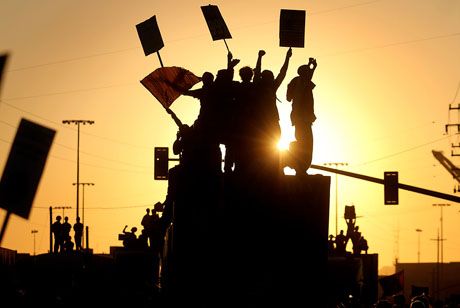News
You are here
US escalates threats against Iran

January 10, 2012
The US is moving closer to a military attack on Iran, as it prepares to implement tough new sanctions.
The sanctions follow the November release of another report by the International Atomic Energy Agency (IAEA), which attempts to prove that Iran is building a nuclear weapon—although it provides no real evidence. Most of it is based on unverified intelligence from “member states,” which are not named.
Although the IAEA report remains inconclusive, the US and its allies have attempted to spin its findings as an excuse to further target Iran.
If implemented, new sanctions would target Iran’s oil industry, blocking exports and undermining Iran’s economy. Iran has responded by saying it will block the Strait of Hormuz, the narrow waterway that allows access to the Persian Gulf. Up to a third of global oil supply passes through the Strait.
The US has said it “would not tolerate” any interruption to oil flow to the West, a clear indication that military strikes remain a possible US response. In late December, Iran’s navy conducted military exercises near the Strait. Weeks earlier, it shot down a US drome over Iran.
The flow of Persian Gulf oil is so important to the US that it has stationed its fifth fleet in Bahrain. This “strategic interest” also explains why the US ignores Bahrain’s ongoing attacks on pro-democracy protesters. If the US continues to threaten Iran, it could inadvertently provoke a spike in global oil prices, creating havoc for already fragile Western economies.
Section:
Topics:
- Log in to post comments










